We dutifully prune our fruit trees and our rose bushes, but not all of us are taking the same care with our tomatoes.
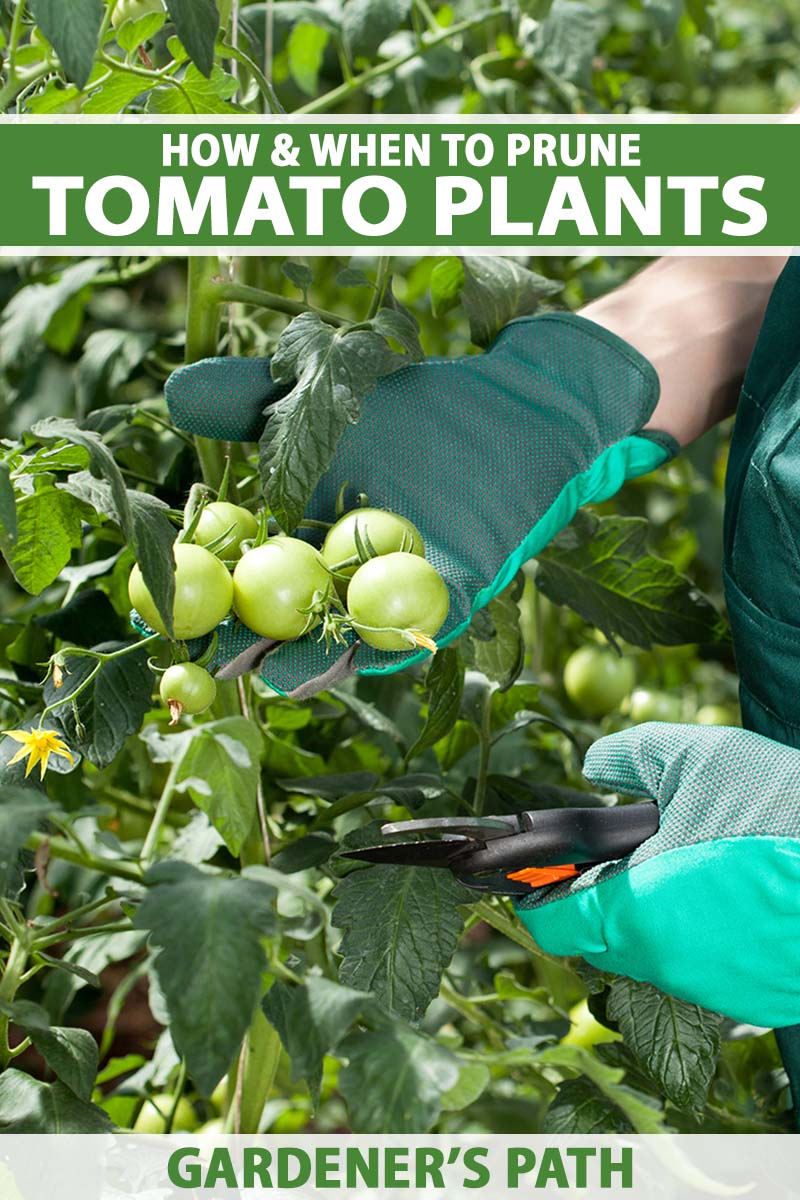
We link to vendors to help you find relevant products. If you buy from one of our links, we may earn a commission.
Doing the right type of pruning at the right time (and on the right plants) can actually increase your harvest dramatically, and it can keep your plants healthier than they might be otherwise.
Doing it wrong, on the other hand, can ruin the tasty bonanza.
Don’t worry, I’m not trying to cast gloom and doom over your garden. Pruning your tomatoes isn’t all that hard!
Coming right up, here’s everything we’re going to go over to help you nail it:
What You’ll Learn
Unlike pruning fruit trees or berry bushes, pruning tomatoes is entirely optional.
You will still be able to grow a big old harvest if you save the pruners for other work. But it can make a big difference in the size, quality, and quantity of your fruit.
If you want to give it a try, read on.
Which Tomatoes Need Pruning?
There are two types of tomato plants: determinate and indeterminate.
Determinate types grow to a certain height, and then they stop. Indeterminate plants don’t have a natural stopping point. They’ll keep growing indefinitely until the end of the season.
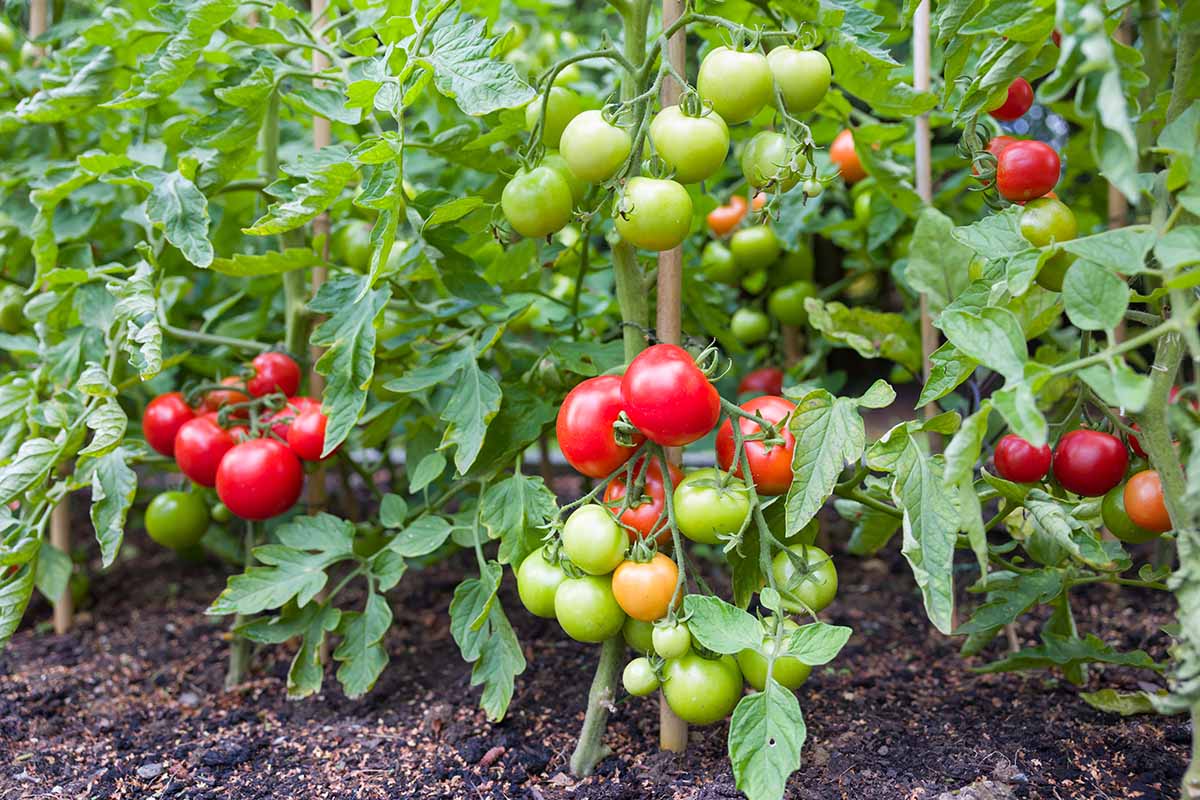
The only types that should be pruned are indeterminate ones. Leave determinate types alone.
When you buy your plant or review the seed packet, the tag or description will tell you which type you have. If it doesn’t, be sure to look up this information to confirm what you’re working with.
Why You Should Prune
In a few words, pruning increases the size and number of fruits on the plant.
Since indeterminate types grow and grow, they tend to produce too much foliage and stems.
This growth shades the fruit, reduces air circulation, and takes up some of the energy that could be directed to fruit growth.
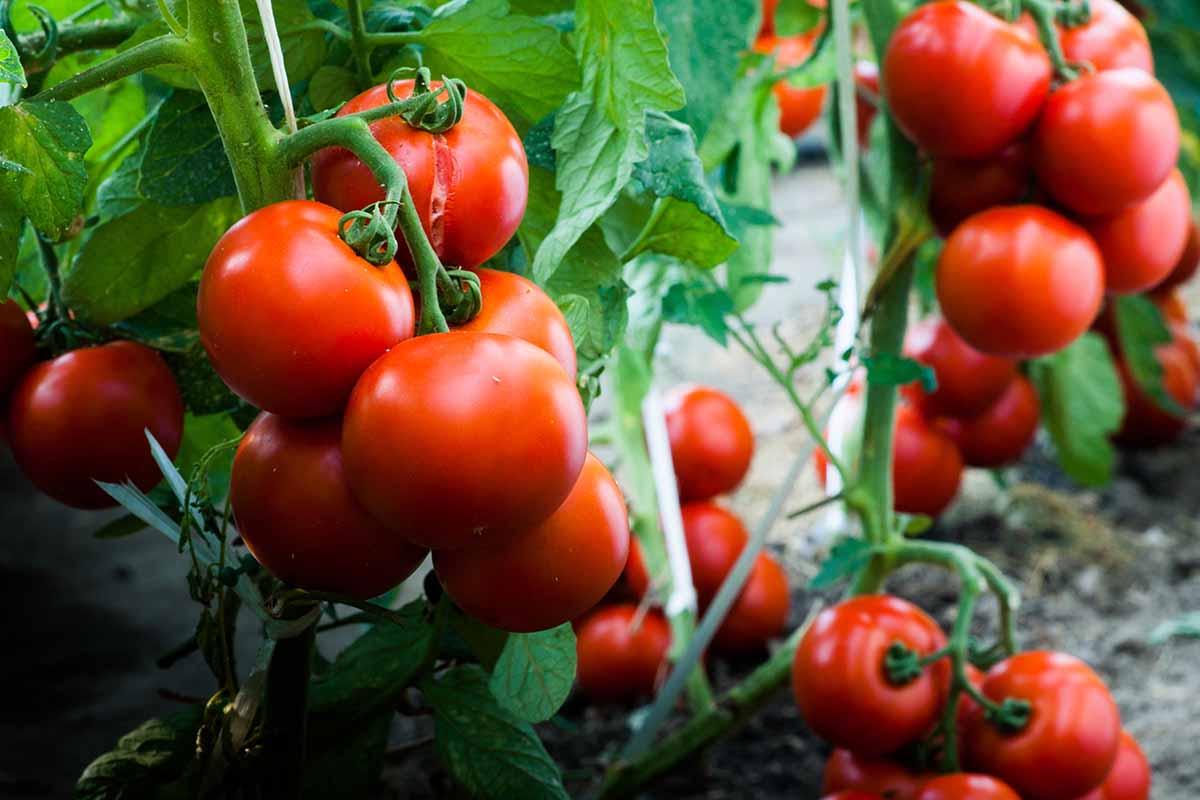
When you limit the number of stems and leaves, the plant can redirect its energy to growing big, juicy fruits.
The improved airflow reduces the chances of fungal or bacterial problems as well.
When to Do the Work
There’s no set time to start pruning. Just keep an eye on the plants. Once you start to see flowers forming an opening, it’s time to break out the pruning shears.
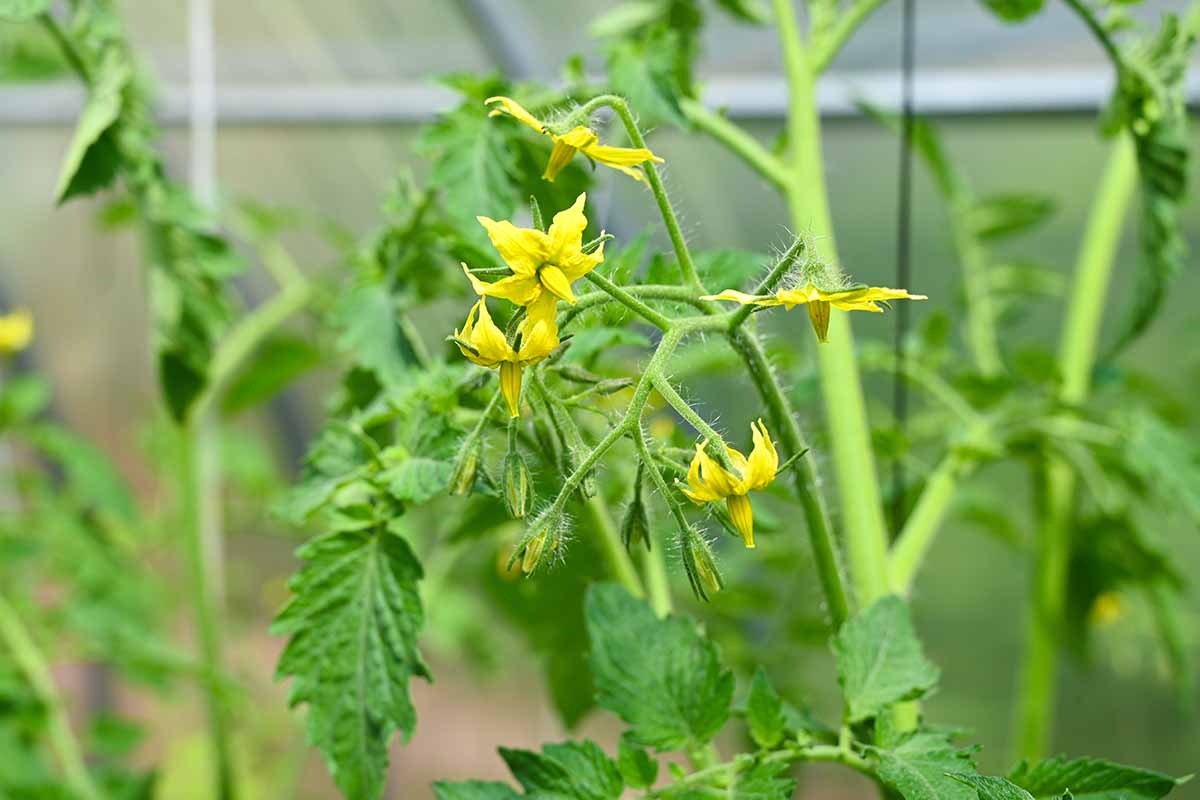
This usually happens some time in mid-June to mid-July, depending on where you live.
After this first round, you’ll need to prune again in two weeks, and every two weeks after that until the fruits start turning red or whatever their mature color is.
Prune when the plants are dry. If it just rained or you accidentally splashed water on the leaves when you were irrigating – something you should try to avoid – wait until the plant is dry.
How to Prune Tomato Plants
Before we jump in, we need to define a few important terms:
The main stems are the parts of the plant that grow upwards, and that support the lateral branch growth.
The branches come out of these main stems and tend to be smaller and grow either horizontally or at an angle rather than upright.
Suckers grow in between the stems and the branches at the joint. These are smaller still, but they will eventually grow large enough to produce fruit.
The problem is, the suckers take up a lot of energy, and they aren’t great producers. So, let’s get rid of them!
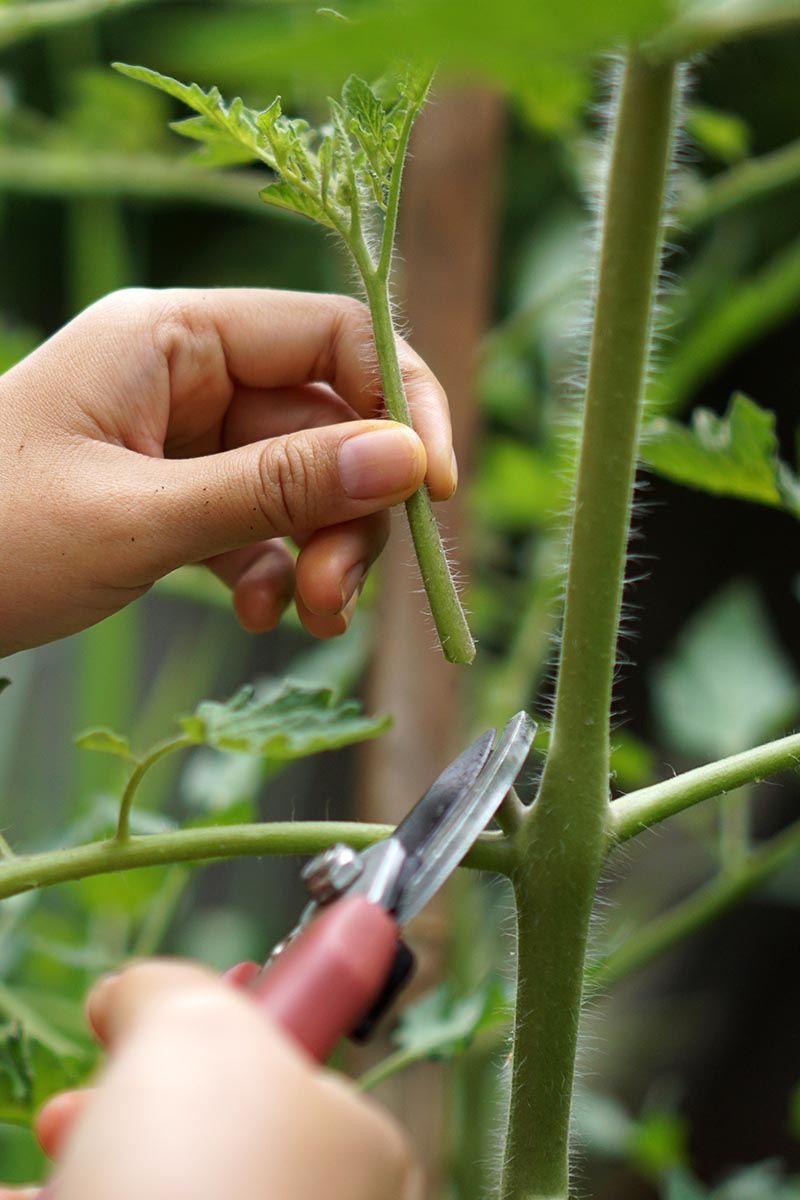
Cut these suckers off as close to the base as you can.
You can do this using scissors or pruners, or just pinch them off with your fingernails. Whichever method you choose, clean your tools between plants with soapy water.
Also, remove any suckers that pop up at the base of the plants from the roots.
If you leave the job for too long and the suckers grow large, instead of cutting them off entirely, snip a little bit away from the base, allowing a few leaves to remain.
This protects the stem from sunburn after being suddenly exposed.
Don’t remove more than a third of the foliage at one time.
What About Determinate Types?
I know we said that you should never prune determinate types, but there are a few exceptions.
If a branch breaks or looks like it might be diseased, off with its head!
Similarly, if you have two fruits growing pressed up against each other, eliminate one.
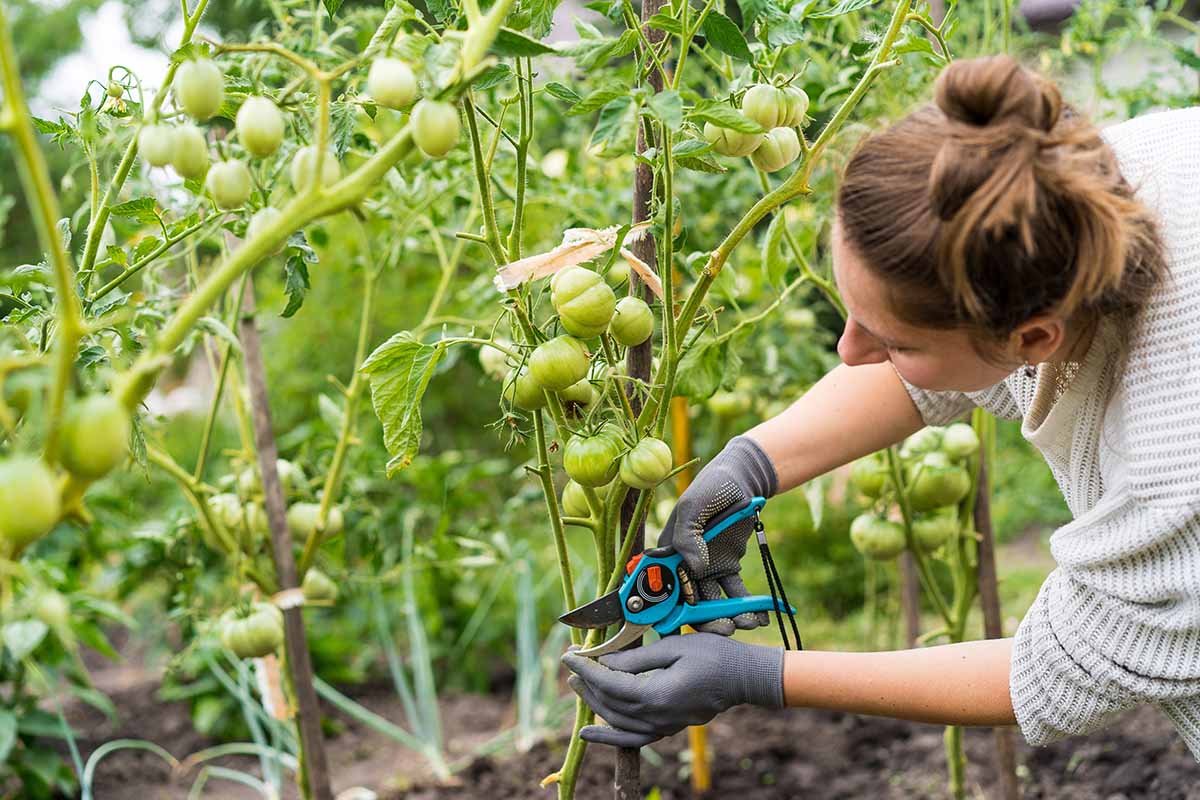
Over time, the lower branches might start to turn yellow. Prune these off, too.
You should also remove any suckers that form below the first flower cluster.
Otherwise, you can pretty much leave determinate types alone. Since the size and the general number of tomatoes that will be produced are built into the plant’s genetic structure, further pruning will only reduce your harvest.
Some Tomatoes Need a Little More Love
Gardening is all about absorbing new information and changing the way we do things as needed.
If you’ve been letting your indeterminate tomatoes do their thing without trimming, it’s time to switch things up a little. I have no doubt you’ll be happy you did.
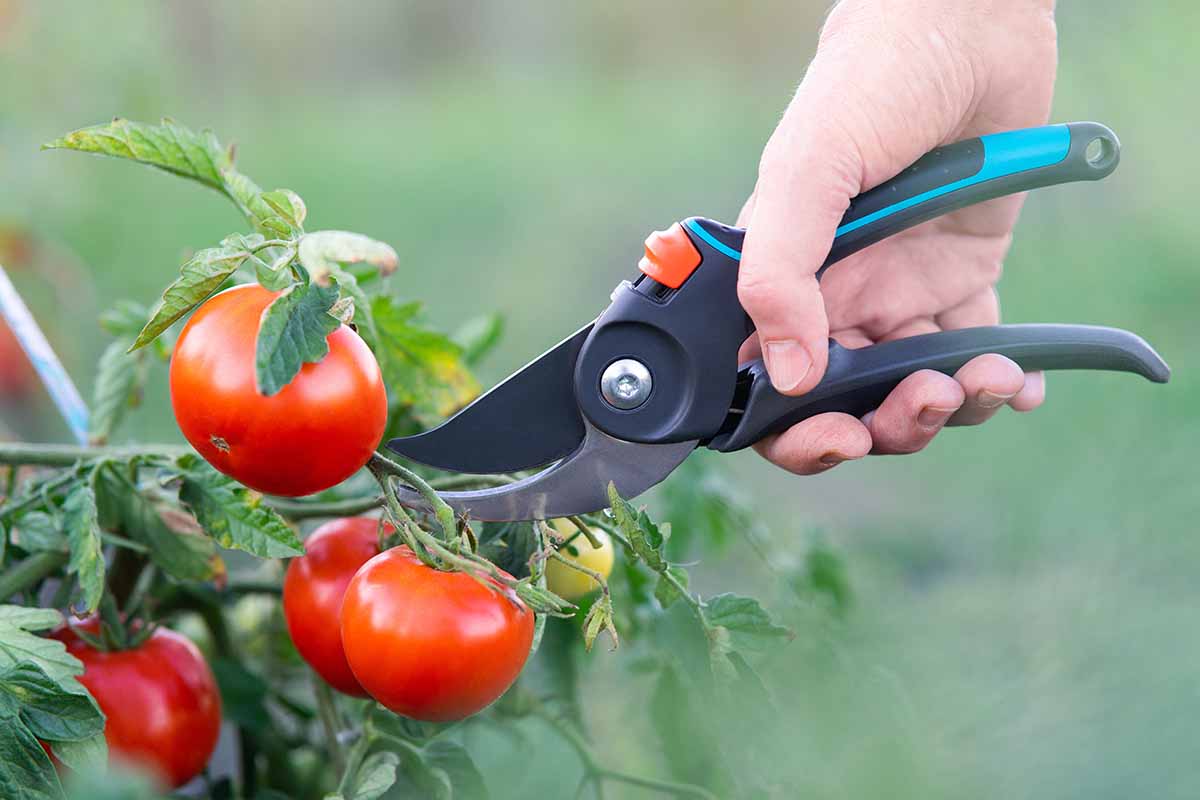
Now, for the most important part: what kind of tomatoes are you growing? Are you a fan of big old beefsteaks? Prefer sweet-as-candy cherries?
Tell me about it, and how you use them, in the comments section below.
Pruning isn’t the only thing you need to know about when you’re growing and using tomatoes, obviously. Looking for more information? Check out a few of our other guides, starting with these:


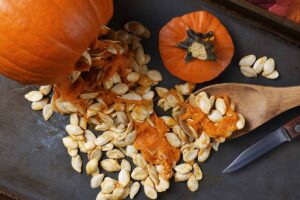
I have planted Beefsteak tomato plants and Big Boys. Also planted Cherry tomatoes, called Husky Cherry Red
Great to know, my tomato plants are the type that need pruned, Beefsteak and Big Boy and Cherry tomatoes!
That’s great Steve, let us know if you have any questions – happy gardening!